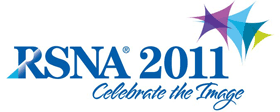
Abstract Archives of the RSNA, 2011
SSA01-05
Ultrasound Screening in Women with Mammographically Dense Breasts
Scientific Formal (Paper) Presentations
Presented on November 27, 2011
Presented as part of SSA01: ISP: Breast Imaging (Ultrasound)
Kathryn L. Greenberg MD, Presenter: Nothing to Disclose
Regina J. Hooley MD, Abstract Co-Author: Research grant, SuperSonic Imagine
Rebecca Mary Mae Stackhouse MD, MPH, Abstract Co-Author: Nothing to Disclose
Jaime Lynn Geisel MD, Abstract Co-Author: Nothing to Disclose
Reni Simov Butler MD, Abstract Co-Author: Nothing to Disclose
Liane Elizabeth Philpotts MD, Abstract Co-Author: Nothing to Disclose
Khadijeh Kadivar MD, Abstract Co-Author: Nothing to Disclose
Liva Andrejeva-Wright MD, Abstract Co-Author: Nothing to Disclose
Madhavi Raghu MD, Abstract Co-Author: Nothing to Disclose
Beginning October 1, 2009, Connecticut law requires radiologists to inform patients with heterogeneous or extremely dense breasts on mammography that they may benefit from the addition of screening breast ultrasound. The purpose of this study is to determine the performance of hand-held screening breast ultrasound in these women.
A retrospective review was performed on 937 women with dense breasts on mammography and who subsequently underwent hand-held screening breast ultrasound at our facilities October 1, 2009 through September 30, 2010. All studies were initially performed by a breast ultrasound technologist and immediately reviewed and interpreted by a radiologist.
The average age of patients was 52 years (+/- 9.6, range 29-89). The average length of time between the mammogram was 60.4days (+/- 66.3days, range 0-361days). Of 937 women, 615 (65.6%) were low-risk, 123 (13.1%) intermediate-risk, and 113(12.1 %) high-risk for breast cancer. Risk factors were unknown in 86(9.2%). Of the screening ultrasounds, 699 (75%) were classified BIRADS 1 or 2, 191 (20%) BIRADS 3 and 47 (5%) BIRADS 4. Of 60 biopsies performed in 52 patients, 9 were BIRADS 3 lesions and 51 were BIRADS 4. 57/60 biopsies were benign and 3/60 biopsies were malignant (all BIRADS 4). All 3 cancers were found in post menopausal patients and were solid masses, including a 9mm and 4mm infiltrating duct carcinoma and a 5mm DCIS. One cancer was found in each of the 3 risk groups. 44/937 (4.7%) of patients had a false positive exam. The overall positive predictive value (PPV) for biopsy of BIRADS 4 masses was 5.9% (3/51). The PPV in the low-risk group was 3.4% (1/29) and 14.2% (1/7) for both the intermediate and high-risk groups. The overall cancer detection rate was 0.32% (3/937). The cancer detection rate in the low, intermediate and high-risk groups was 0.16% (1/615), 0.81% (1/123) and 0.88% (1/113), respectively.
Technologist performed hand-held screening breast ultrasound offered to women in the general population with heterogeneous or dense breasts can detect small mammographically occult breasts cancers with a cancer detection rate of 0.32, although the overall PPV is low.
Connecticut law now requires mammographers to communicate breast density to patients and insurers to pay for screening ultrasound in those patients with dense breasts.
Greenberg, K,
Hooley, R,
Stackhouse, R,
Geisel, J,
Butler, R,
Philpotts, L,
Kadivar, K,
Andrejeva-Wright, L,
Raghu, M,
Ultrasound Screening in Women with Mammographically Dense Breasts. Radiological Society of North America 2011 Scientific Assembly and Annual Meeting, November 26 - December 2, 2011 ,Chicago IL.
http://archive.rsna.org/2011/11007957.html

